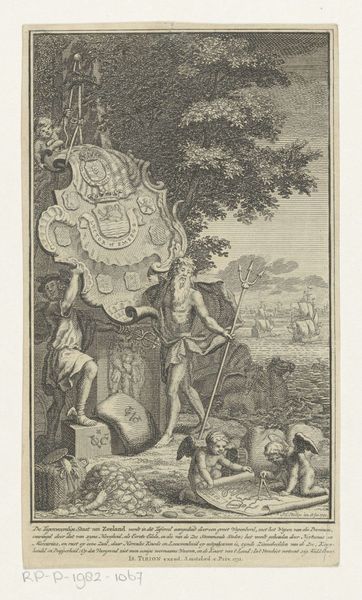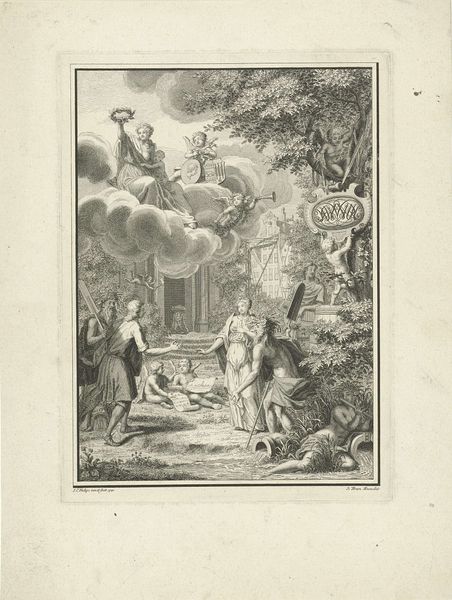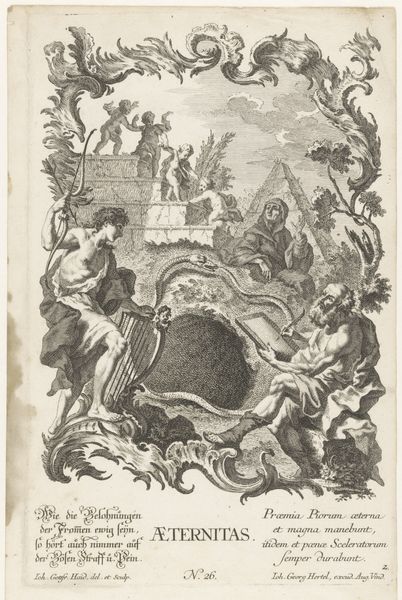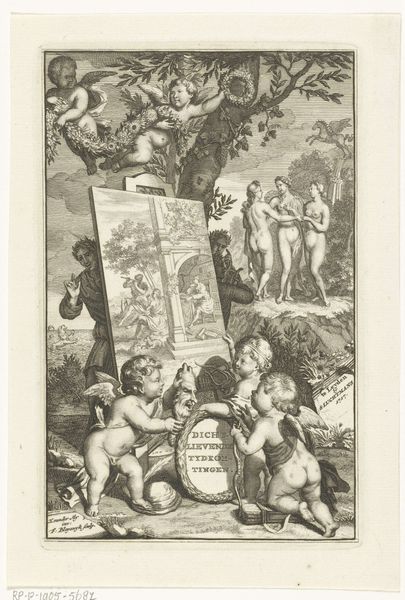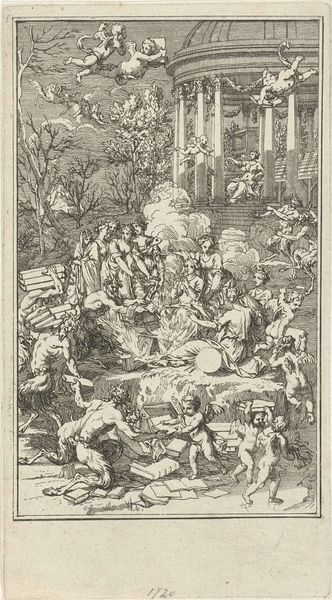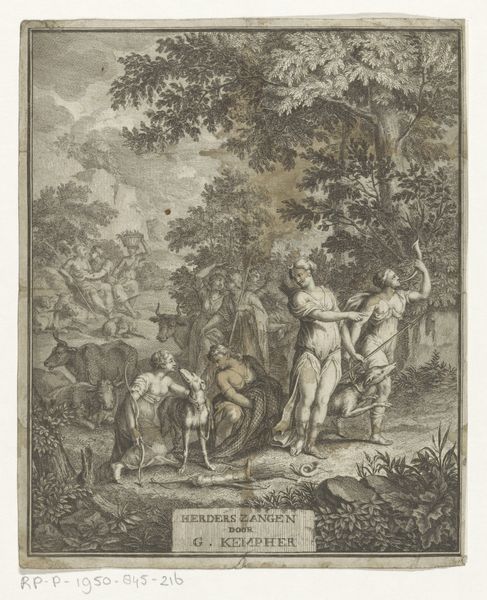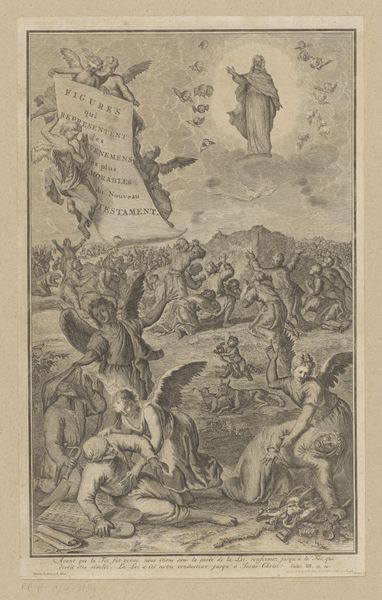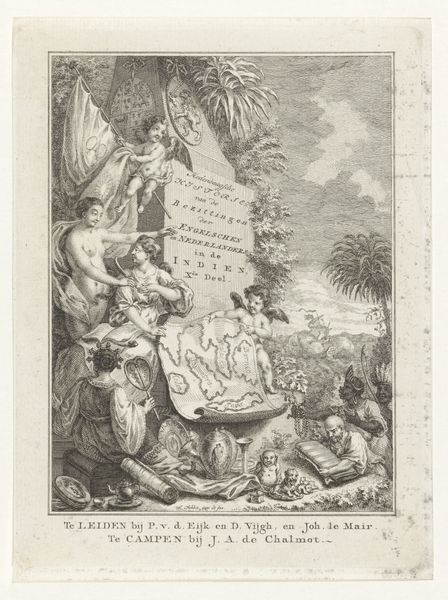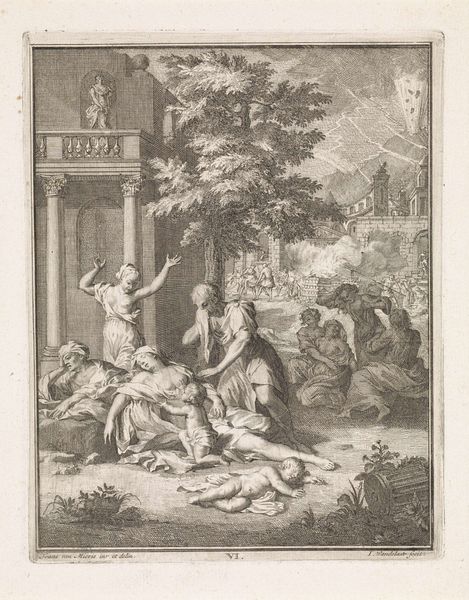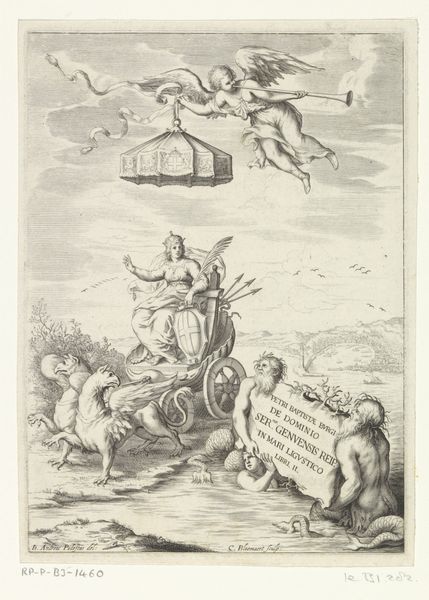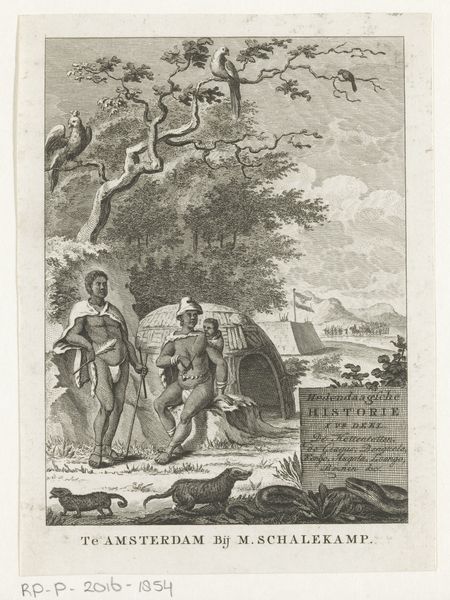
Dimensions: height 173 mm, width 122 mm
Copyright: Rijks Museum: Open Domain
This engraving, made by Jan Caspar Philips in the 18th century, teems with symbols reflecting the history of France. At its heart, the fleur-de-lis on a shield signifies French royalty and divine right, emblems that stretch back to the medieval era. Note how this symbol reappears in various contexts, from tapestries to coats of arms, each time reinforcing the power and legitimacy of the French monarchy. Yet, consider its evolution – initially a religious symbol of purity, it later became a political emblem, imbued with the weight of royal ambition and national identity. This transformation mirrors a deeper psychological process, a collective memory shaping and reshaping symbols to fit evolving needs and ideologies. Observe the burning building in the background, juxtaposed with the triumphant figures. This evokes a sense of chaos and rebirth, suggesting a cyclical view of history. It is a powerful image, tapping into our subconscious understanding of destruction and renewal, engaging viewers on an emotional level that transcends mere historical record. The enduring presence and shifting meaning of the fleur-de-lis serve as a potent reminder of the non-linear, cyclical progression of symbols, resurfacing and evolving across time.
Comments
No comments
Be the first to comment and join the conversation on the ultimate creative platform.
